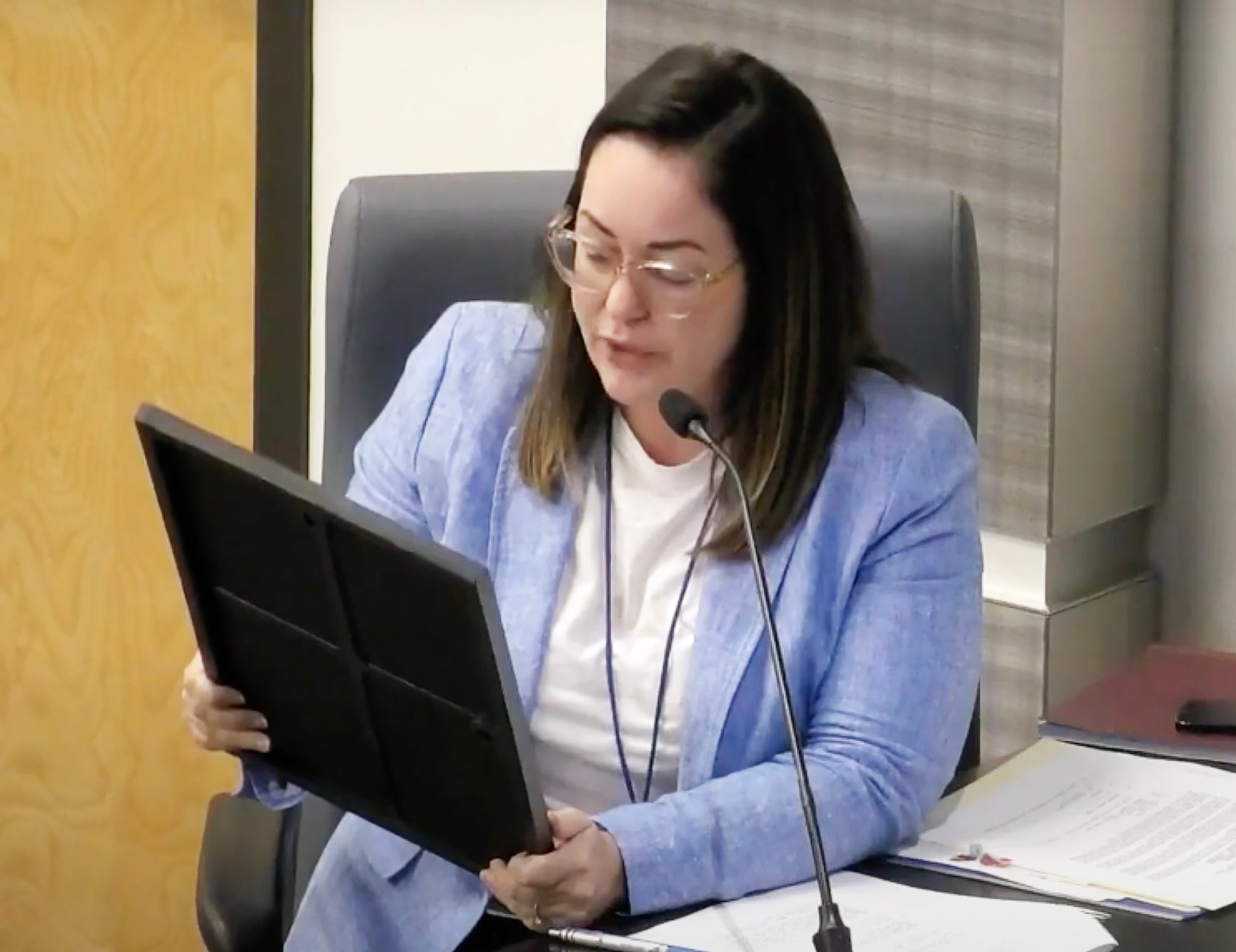States Seek Crackdown on Toxic Ingredients in Cosmetics to Close Gaps in Federal Oversight
Published 10:00 am Sunday, February 26, 2023
|
Getting your Trinity Audio player ready...
|
Washington has joined more than a dozen other states in seeking to crack down on toxic substances in cosmetics after a state-funded study there found lead, arsenic, and formaldehyde in makeup, lotion, and hair-straightening products made by CoverGirl and other brands.
The U.S. stalled out on chemical regulations after the 1970s, according to Bhavna Shamasunder, an urban and environmental policy associate professor at Occidental College. And that has left a regulatory void, as lax federal oversight allows potentially toxic products that would be banned in Europe to be sold in American stores.
“Lots of products on the market aren’t safe,” Shamasunder said. “That’s why states are helping create a solution — it’s a patchwork approach.”
The potential exposure to toxicants in cosmetics is especially worrisome for women of color, because studies show that Black women use more hair products than women of other racial groups and that Hispanic and Asian women have reported using more cosmetics in general than non-Hispanic Black and white women.
The Washington state legislation is a second attempt at passing the Toxic-Free Cosmetics Act, after legislators approved a bill in 2022 that was stripped of the ban on toxic ingredients in cosmetics. This year, lawmakers have additional context after a report commissioned by the legislature and published by the state Department of Ecology in January found multiple products with concerning levels of hazardous chemicals, including lead and arsenic in dark-tint CoverGirl Clean Fresh Pressed Powder foundation. CoverGirl Continuous Color Lipstick and Markwins Beauty Brands’ Black Radiance Pressed Powder foundation were among other products from various brands containing lead, the report found.
Research teams asked Hispanic, Black, and multiracial women what beauty products they used. Researchers then tested 50 cosmetics purchased at Walmart, Target, and Dollar Tree, among other shops.
“Companies are adding preservatives like formaldehyde to cosmetics products,” said Iris Deng, a toxics researcher for the Washington State Department of Ecology. “Lead and arsenic are different stories. They’re detected as contaminants.”
Markwins Beauty Brands did not respond to requests for comment.
“Nominal traces of certain elements may sometimes be present in product formulations as a consequence of natural mineral origin, as permitted by applicable law,” Miriam Mahlow, a spokesperson for CoverGirl parent company Coty Inc., said in an emailed statement.
The Washington report’s authors said European Union countries ban products like the dark-tint CoverGirl foundation. That’s because arsenic and lead have been linked to brain and nervous system damage and cancer. There is “no known safe level of lead exposure,” said Marissa Smith, Washington state’s senior regulatory toxicologist, and formaldehyde is also a carcinogen.
“When we find these chemicals in products applied directly to our bodies, we know people are being exposed,” Smith added. “Therefore, we can assume these exposures are contributing to health impacts.”
Though most of the products’ lead content was low, Smith said, people are often exposed for years on end, considerably increasing the danger.
The Washington ecology department findings were not altogether surprising: Other testing bodies have picked up preservatives such as formaldehyde or, more often, formaldehyde-releasing agents such as quaternium-15, DMDM hydantoin, imidazolidinyl urea, and diazolidinyl urea in hair-straightening products marketed especially to Black women. Formaldehyde is one of the chemicals used to embalm corpses before funerals.
In addition to Washington, at least 12 states — Hawaii, Illinois, Massachusetts, Michigan, Nevada, New Jersey, New York, North Carolina, Oregon, Rhode Island, Texas, and Vermont — are considering policies to restrict or require disclosure of toxic chemicals in cosmetics and other personal care products.
States are acting because the federal government possesses limited authority, said Melanie Benesh, vice president of government affairs for the Environmental Working Group, a nonprofit that researches what’s in household and consumer products.
“The FDA has had limited resources to pursue ingredient bans,” Benesh added.
Congress has not given the Environmental Protection Agency widespread authority to regulate such products, even though contaminants and preservatives from cosmetics end up in the water supply. In 2021, a California man petitioned the EPA to ban toxic chemicals in cosmetics under the Toxic Substances Control Act, but the petition was denied, said Lynn Bergeson, a lawyer in Washington, D.C., because cosmetics are outside the scope of the act’s jurisdiction.
“The law is crystal clear on this,” she said.
Bergeson said the regulation of chemicals is subject to the Federal Food, Drug, and Cosmetic Act, but the FDA regulates only color additives and chemicals in sunscreen because those products make the medical claim of decreasing the risk of skin cancer.
Minnesota, for example, fills in the regulatory gaps by testing for mercury, hydroquinone, and steroids in skin-lightening products. It also passed a law in 2013 banning formaldehyde in children’s products such as lotions and bubble baths.
California has passed several laws that regulate cosmetics ingredients and labeling, including the California Safe Cosmetics Act in 2005. A law adopted in 2022 bans intentionally added perfluoroalkyl and polyfluoroalkyl substances, known as PFAS, in cosmetics and apparel starting in 2025.
Last year, Colorado also passed a ban of PFAS in makeup and other products.
But consumer safety experts said that states should not have to fill in the void left by federal regulations, and that a smarter approach would entail the federal government subjecting cosmetics ingredients to an approval process.
In the meantime, states are fighting an uphill battle, because thousands of chemicals are available to manufacturers. As a result, a gap exists between what consumers need for protection and regulators’ ability to act, said Laurie Valeriano, executive director of Toxic-Free Future, a nonprofit that researches and advocates for environmental health.
“The federal systems are inadequate in that they do not require the safest chemicals to be used,” Valeriano said. “Instead, they allow hazardous chemicals in personal care products, such as PFAS, phthalates, or even formaldehyde.”
Moreover, the federal government’s risk assessment system is flawed, she said, “because it attempts to determine how much risk from toxic exposures is acceptable.” In contrast, the approach that Washington state hopes to legislate would assess the hazards and ask whether the chemicals are necessary, or if there are safer alternatives — which is to say prevent toxic ingredients in cosmetics in the first place.
It’s a lot like the approach taken by the European Union.
“We put boundaries and restrictions around these chemicals,” said Mike Rasenberg, hazard assessment director of the European Chemicals Agency in Helsinki.
Rasenberg said that because research shows formaldehyde causes nasal cancer, the EU has banned it, plus lead and arsenic, in beauty products. The EU’s 27 countries also work together to test products for safety.
In Germany, more than 10,000 cosmetic products are examined annually, said Florian Kuhlmey, spokesperson for that country’s Federal Office of Consumer Protection and Food Safety. And it doesn’t end there. This year, Germany will examine about 200 samples of children’s toothpaste for heavy metals and other elements banned in the EU for cosmetics, Kuhlmey added.
The legislation in Washington would move the state toward a more European approach to chemicals regulation. If approved, it would give retailers that sell products with banned ingredients until 2026 to sell existing stocks.
Meanwhile, customers can protect themselves by seeking out natural beauty products, Atlanta-area dermatologist Dr. Chynna Steele Johnson said.
“Lots of products have formaldehyde-releasing agents,” Steele Johnson said. “But it isn’t something customers can find on a label. My suggestion — and this goes for foods too — would be fewer ingredients are better.”
KHN (Kaiser Health News) is a national newsroom that produces in-depth journalism about health issues. Together with Policy Analysis and Polling, KHN is one of the three major operating programs at KFF (Kaiser Family Foundation). KFF is an endowed nonprofit organization providing information on health issues to the nation.





